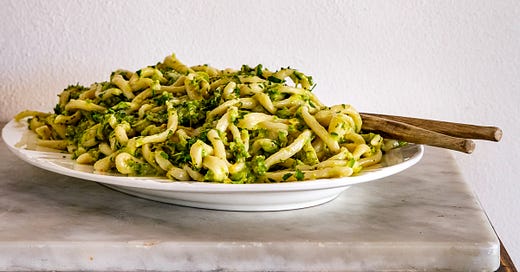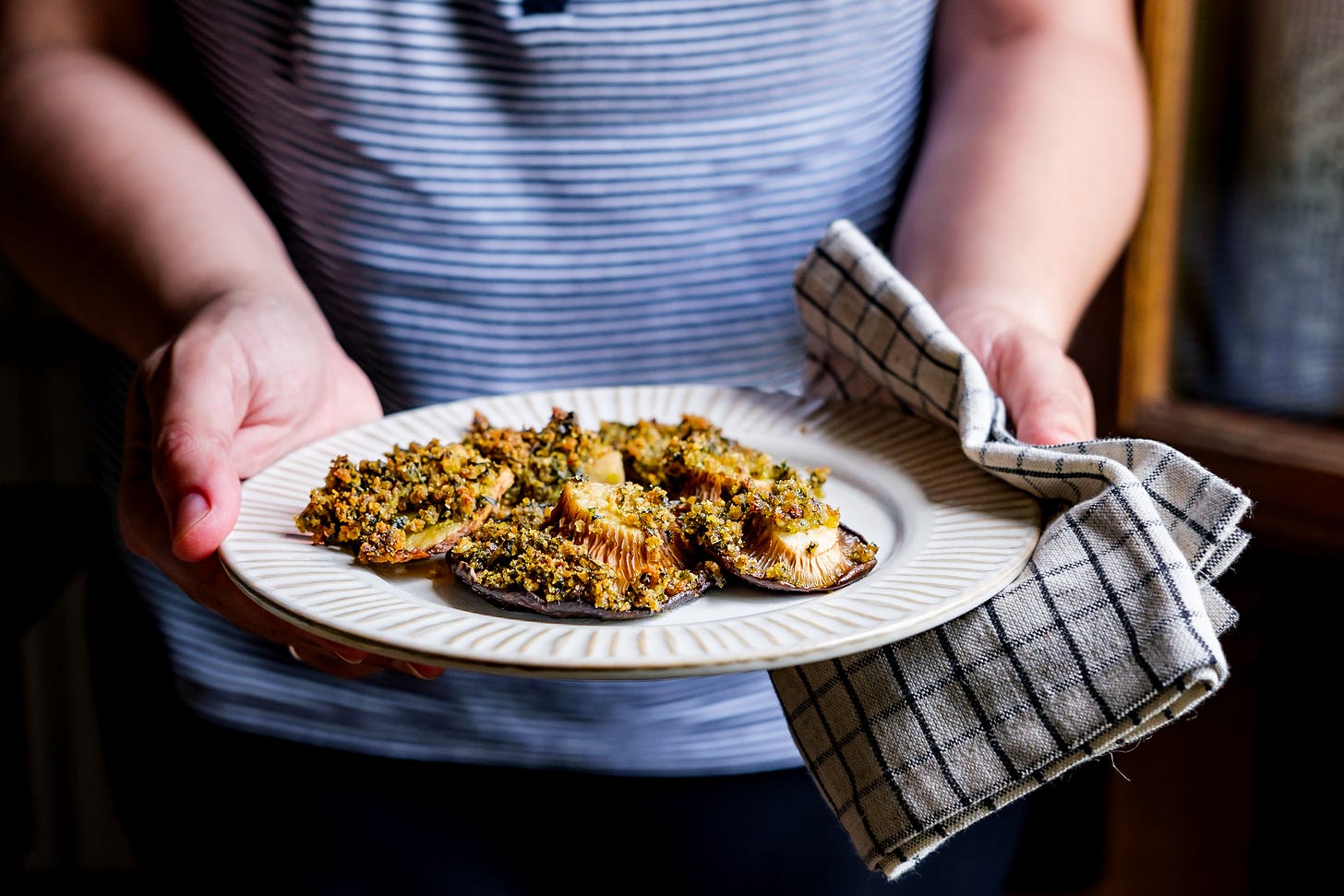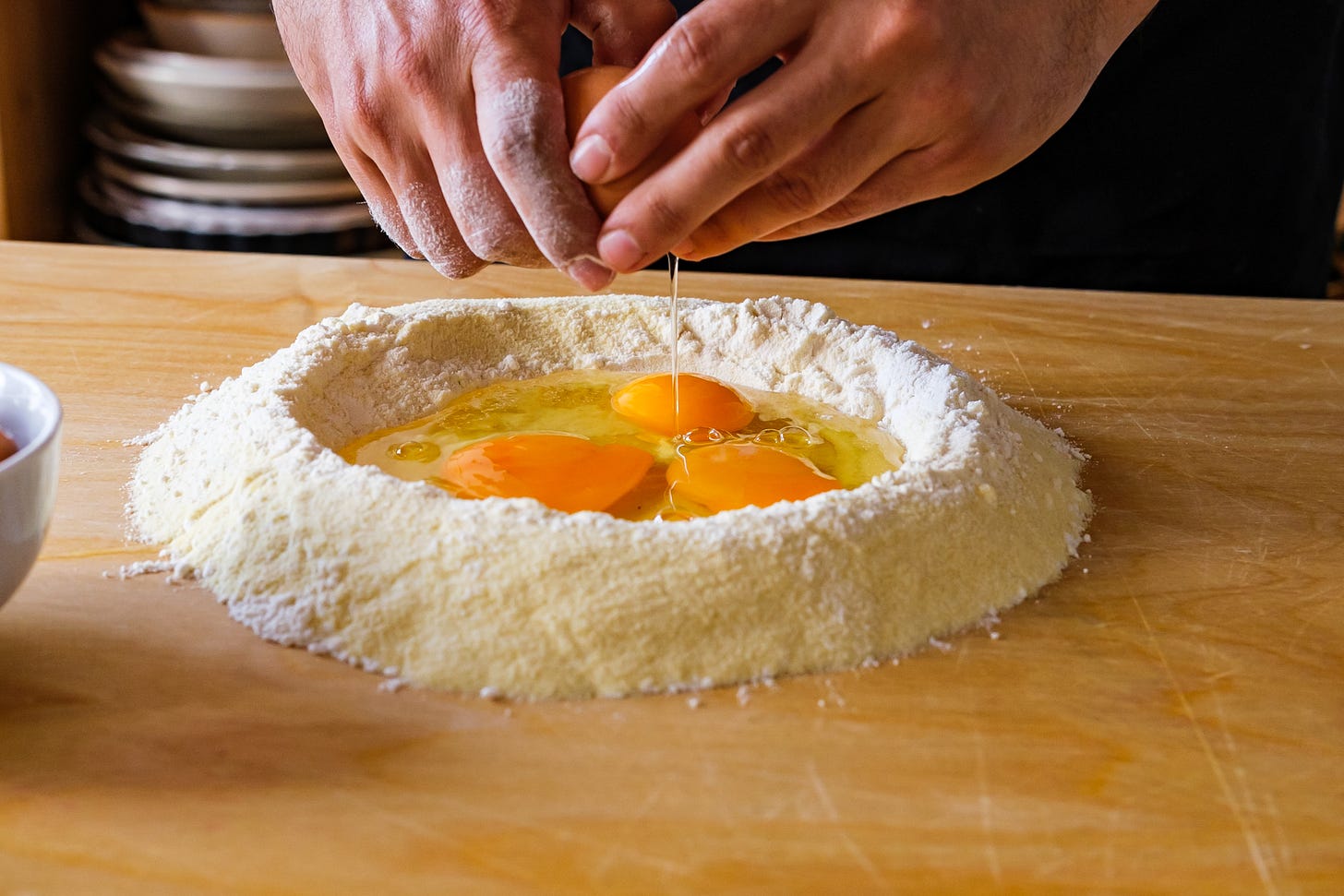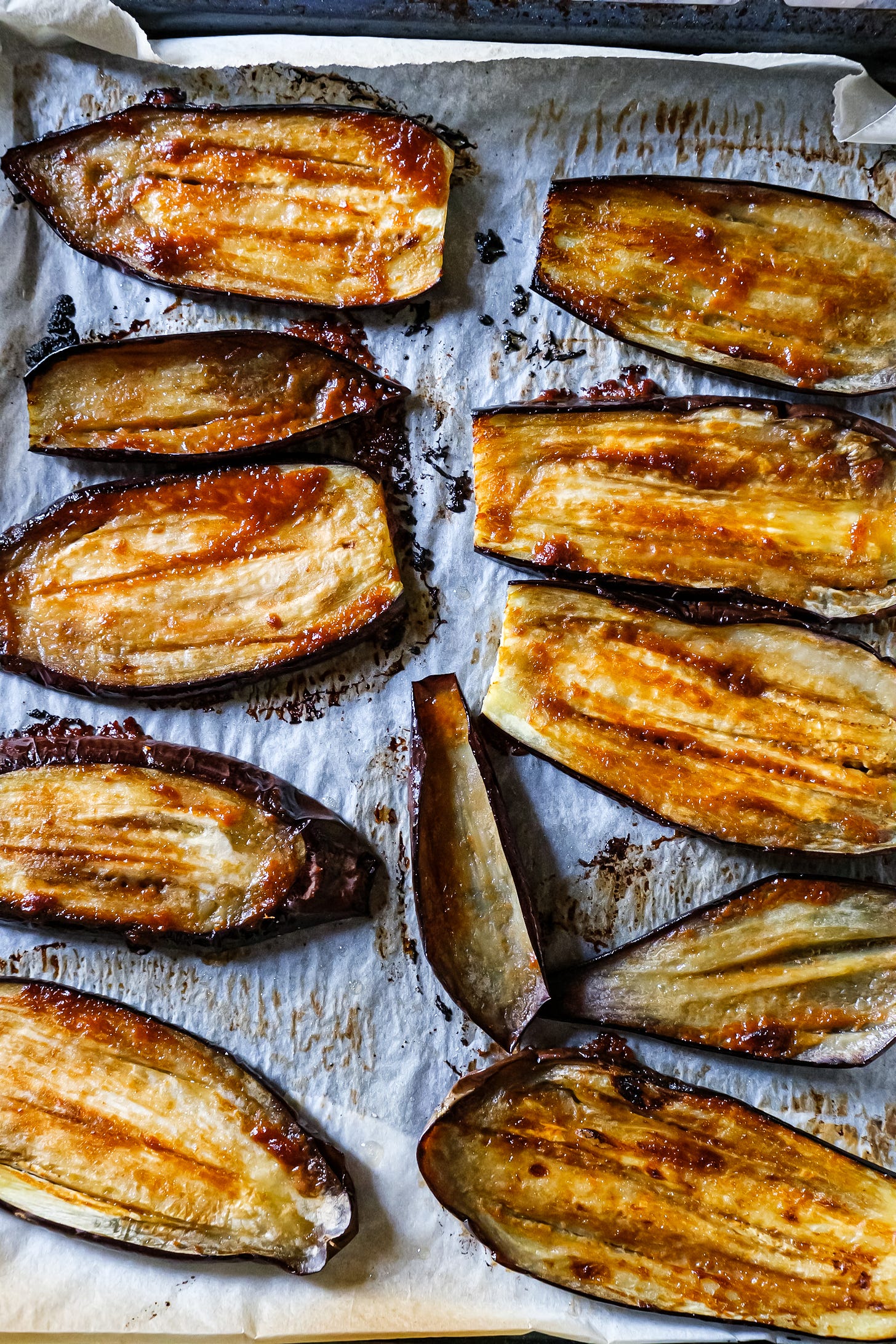Vegetables, the Italian way
Vegetables in restaurants and vegetables at home | Italian vegetables: overcooked or long cooked? | What it takes to develop a recipe | Zucchini sauce for pasta
I love autumn, but I have a love affair with summer vegetables. Even though I can barely stand the sultry Italian summer, I’m thrilled when I think about the seasonal produce and all the possibilities they bear within. Sun-kissed heirloom tomatoes thickly sliced and doused in extra virgin olive oil, charred bell peppers, smoky eggplants, green bean and potato salads dotted with capers and olives… During the summer I love nothing more than improvising a dinner with what the vegetable garden has to offer, or with what we can pick at the market.
The same can be said for cooking classes.
When we start the day at the local market, after a vital (second) breakfast with espresso, cappuccino, and a selection of pastries, we head to the vegetable and fruit stall and I start inquiring. Are these heirloom tomatoes from Tuscany? Oh, look at the strawberries. Where are they from? Oh, Mugello, fabulous. We’ll get the strawberries. And what about the cantaloupes? From Maremma? I’ll get two. Yes, I want to eat them today, so if you could give me two ripe ones it would be perfect. Do you have the fresh aglione? Brilliant, so I’ll need also a basketful of ripe Fiorentini tomatoes to make a sauce for the tagliatelle. Each fruit and vegetable at the market has a tag with the price and the origin: not only a region but often a more specific area or town.
And it goes on and on until I fill up my large straw bag with the best produce of the day. We do not have a fixed menu for the cooking class, as we’re going to improvise, in a jazz jam session. I like the thrill of not knowing what you’re going to have for lunch, even though you perfectly know it will be delicious.
After the first years of very traditional, standard Tuscan recipes - a kind of all-season menu - we decided to focus on vegetables, which are the main protagonists of the Tuscan cucina povera, especially in the summer. Lighter, refreshing fare, far from what you could normally find in restaurants.
If your experience of the Italian food is limited to what you can eat in an average restaurant or trattoria, you might think that there’s a glitch in the distribution system, as all that incredible variety of vegetables you can spot at a market mysteriously disappear, and you end up the with same, old, boring spread of side dishes: spinaci saltati, sautéed spinach, wilted lettuce salad with grated woody carrots, grilled vegetables, and fagioli all’olio, beans dressed with a drizzle of olive oil. I’m just making a sweeping assumption, but you can tell me if this has been the same feeling you had eating out in Italy.
This conversation on IG with Stefano Arturi made me think about the way we create a menu for our cooking classes, and especially why we choose to focus on vegetables.
Our aim is to let you into the real Tuscan home cooking - that is certainly not focused on steak and meat stews and ragù all year long -, to open a door on what a family really eats on a daily basis. And my favourite way to do this is to cook as many vegetables as possible, as they are the key to understanding our approach to food and seasonality.
Vegetables at home are vibrant with colours and bursting with flavour. They are filling, refreshing, and affordable, the true protagonists of a meal, be they a side dish, an appetizer, a sauce for pasta, or a comforting soup.
And here I know you would raise a question. But Italians just overcook their vegetables! Isn’t it boring?
Yes and no. Yes, we cook our vegetables for longer than you would expect, but this is essential to bring out their sweetness, and when you combine long, gentle cooking with extra virgin olive oil you know you are making magic.
I already touched on this theme in an old post on the blog, Italians and overcooked vegetables: a love story.
Today I am here to praise the charm of overcooked vegetables. Not all vegetables give their best when cooked for a long time, some get soggy and unpalatable, but take French beans, broccoli or cavolo nero. They give up, surrender to the flame and release a relaxed and intense aroma which can suit pasta dishes, meat and even stand up for itself in a comforting side dish.
In the day and age of the al dente vegetable, what a joy to find a recipe that celebrates the well cooked, buttery vegetable.
Fergus Henderson – The Complete Nose to Tail
We were planning to have another Bake-along on Sunday - one of the exclusive activities reserved for our subscribers -, but we’re very behind with our schedule and we need to review all the edits of our manuscript for the last (?) time before we leave for our holidays, so we need to postpone it. As we received a very warm feedback, we will definitely organize more online classes and free chats from September on.
When you join our subscription-based newsletter, you are actively contributing to the making of Letters from Tuscany.
Zucchini cacio e pepe sauce for your favourite pasta
And this brings us to today’s recipe. Saying that we’ve been making this pasta often during our cooking classes is an understatement. As soon as the zucchini appeared on the market stalls and in the garden, I tried to incorporate them into a pasta sauce. I wanted this sauce to be verdant, bursting with freshness thanks to fresh herbs, but also creamy, and sweet: to obtain this result you have to cook your zucchini long and slow.
Having many cooking classes a week gave me the chance to test the recipe multiple times until I reached the results I had in mind (and thank you to all of you that embraced my crazy love for zucchini and happily joined my quest to get to the perfect creamy zucchini sauce).
First, we tried to slice the zucchini as thin as possible, then we opted for a mandoline to have paper-thin rounds of zucchini. Then, Tommaso suggested that we grated the zucchini. By doing this, they would hug the pasta better. That was the turning point.
Once we had grated the zucchini, we transferred them to a large pan - pick a large one, as you’re going to toss the pasta in the pan! - added a lavish quantity of olive oil, handfuls of finely minced fresh herbs (basil and mint are mandatory, then you can experiment with thyme, parsley, or calamint) and, when possible, also finely sliced zucchini blossoms.
Cook the zucchini on low flame for about half an hour, or even longer, until all the water they release will evaporate, and they will turn into a creamy mess. Now throw into the pan also some finely chopped pistachios. Pine nuts would work just as well.
How to add even more creaminess? Grated Pecorino romano, pasta cooking water, and an energetic toss in the pan, just like in cacio e pepe.
Yes, basically this is like zucchini meet basil pesto meet cacio e pepe.
It might sound like a clash of flavours, but it is actually the perfect summer pasta dish, that ticks all the boxes. Choose your favourite fresh pasta - we tried it with homemade pici and with mint laminated tagliatelle - but even dry pasta like spaghetti and rigatoni would work, and cook a glorious summer dish inspired by the best seasonal produce.
No, you probably won’t find this in a restaurant, but this would be easily found in many households, especially when the zucchini season is at its peak and you need yet one more recipe to cook them.
You can find the step-by-step recipe here (paywalled content).
Link love
Have you seen Tommaso’s new project, Postcards? We met 10 years ago through our blogs, and I’m thrilled to have him writing again and sharing his photos here.
I fully embraced the eggplant season. I’ve been making this recipe from the blog archive on repeat, but also these Miso glazed Eggplants ended up often on our menu.
At the supermarket I found some cardoncelli mushrooms: typical of Le Murge, in Puglia, they are meaty and firm. I was inspired by this recipe on La Cucina Italiana and turned the cardoncelli in a delicious meal along with some cooked chickpeas.
I made Hetty McKinnon’s Sesame, Cucumber and Avocado Salad. Even though cucumbers are one of the most beloved vegetables in a Tuscan summer, they invariably end up in a panzanella or in a tomato salad. From now on, this salad will be on heavy rotation in my kitchen.
Cooking class openings
As I’m refreshing my starter to make a sourdough bread for the upcoming classes, and while I’m infusing more elderflowers in rice vinegar to dress the best tomato salads, here the last available cooking classes for the upcoming months!
Let’s cook the best of the summer season together! We’ll make fresh pasta from scratch, tons of vegetables cooked or dressed the Italian way (hint: plenty of extra virgin olive oil, our own!). We’ll choose the best local organic meat, pecorino, and ricotta, and we’ll close the meal with ripe fruit, home made limoncello, and Tommy’s espresso.
Will you join us?
JULY 14th July - Tuscan cooking class - 2 spots 21st July - Tuscan cooking class - 4 spots 27th July - Market cooking class - 2 spots AUGUST 24th August - Market cooking class - 4 spots 31st August - Market cooking class - 4 spots
NOTE: We won’t have other cooking class in August, but we will resume in September.
Please share with your friends and family if they’re planning a trip to Tuscany in the upcoming months, or drop me an email to juls@julskitchen.com for info and to reserve your class.










Hi Giulia, we’re in Florence and have been going to markets and learning how to cook Tuscan food in our Airbnb kitchen. Where are the classes? Is it easy to get to without a car? Thanks!
Luv the eggplant recipe!